If you thought tales of icy quests, outlandish missions and polar explorers were limited to the North and South Pole, you’re about to have your mind expanded with some fascinating tales from the fabled Northwest Passage.
Canada’s High Arctic is a destination filled with beauty, intrigue, and seclusion, a place to reconnect to nature, a slower pace, and your soul. It’s the perfect antidote to life in the current fast lane.
A journey through Canada’s High Arctic tours you through a world like no other. While many of our inspiring Arctic adventures leave you breathless, there’s something about sailing this largely untravelled Arctic frontier that leaves you speechless, too. Board a holidaymaker, disembark an explorer.
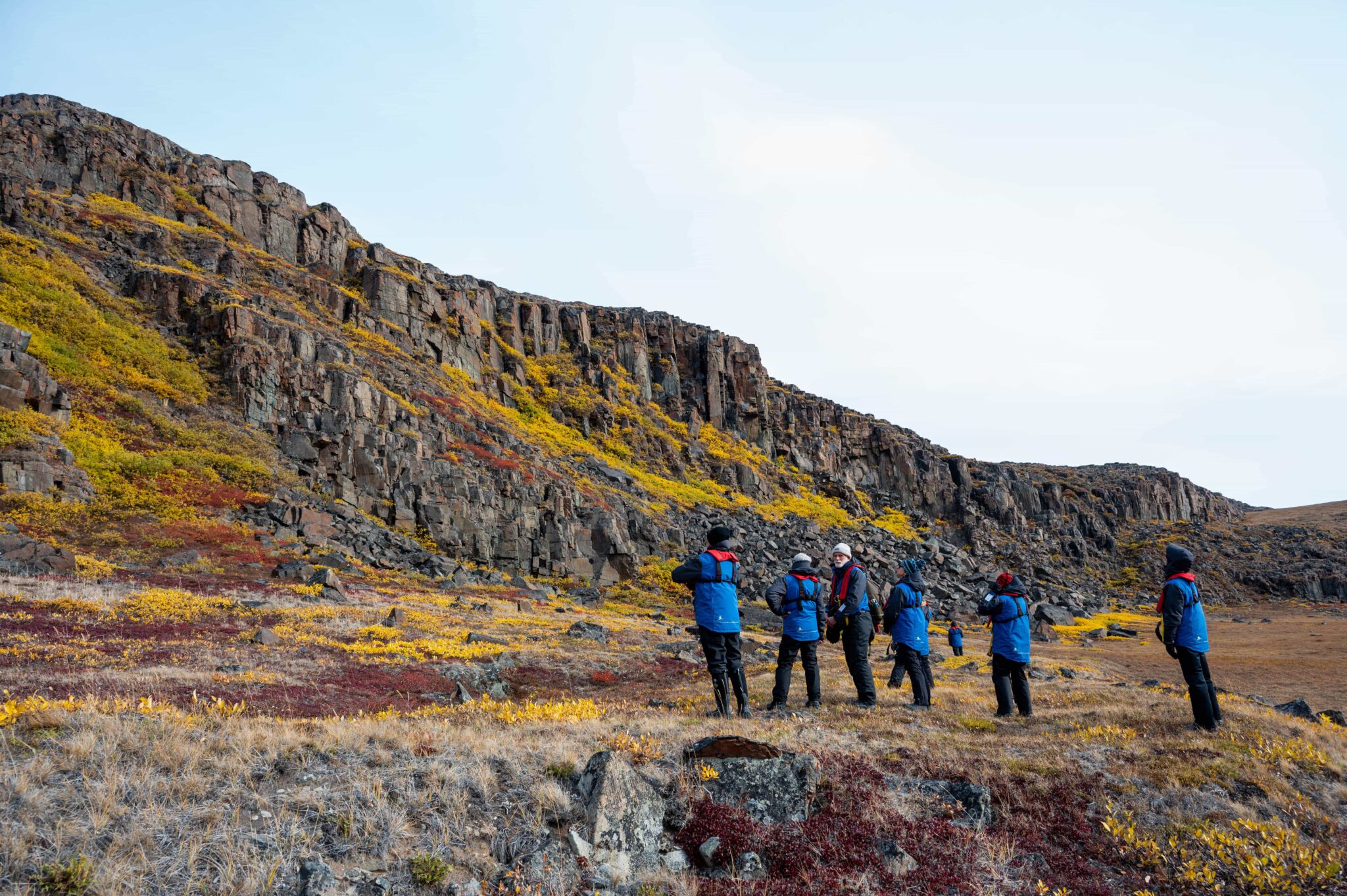
Introducing the Northwest Passage
Although millions flock to Canada annually to see the country’s most iconic destinations, it’s not surprising to hear that the icy corridors of the Northwest Passage hold less attention for the everyday vacationer. However, for intrepid travellers, this remote maritime route has been open to expedition cruise operators since 2006, and has been thrilling our guests since we first sailed the route in 2022.
So, what is the Northwest Passage, or where is the Northwest Passage? Located in the Canadian Arctic, it's an ever-changing network of waterways, channels and straits spanning thousands of kilometres. It connects the Atlantic and Pacific Oceans, leading to the Beaufort Sea.
There are some key Northwest Passage facts to know before we reveal its history and culture:
- It’s 1,450 kilometres (900 miles) from east to west
- There are seven main passage routes
- Canada has 36,500 Arctic islands, including 94 major ones, like Baffin and Victoria Islands
- Parts of the Northwest Passage reach depths beyond 4,000 metres (13,000 feet). That's similar to the distance between Australia and New Zealand!
Along this alluring journey, awe-inspiring icebergs and glaciers line the passage, adding to both its beauty and challenges. It’s easiest to navigate during the Northern Hemisphere’s summer when ice conditions are less severe. During this time, you’ll witness the vast Arctic tundra, made up of permafrost, low vegetation and hardy flora that has adapted over millennia to the extreme cold.
With two expeditions and a handful of departures annually, our experienced Expedition Team will reveal the best of its beauty, history and wildlife. Some of the Arctic wildlife you might catch a glimpse of include arctic foxes, roaming musk oxen, caribou and arctic hares. In the water, enchanting beluga whales and lolling walruses delight, while seals and several species of whale pass by. Seabirds swoop and soar overhead, with puffins, kittiwakes, auks and guillemots among passenger favourites to spy.
While today’s explorers are drawn to the scenery and wildlife, centuries ago, the challenging waterways of the Northwest Passage captured the imagination of explorers. Tales of intrepid voyages and lost-at-sea mysteries pepper the region’s history. Fortunately, you no longer need to be a daredevil adventurer aiming to set a world record to enjoy this fabled Arctic route.
Under the guidance of our passionate Expedition Leaders and aboard our purpose-built ships, see sights like Devon Island’s polar dessert, learn the historical significance of Beechy Island, and cruise the dramatic fjords by Zodiac boat. With our Autumn sailings, you may even witness the vibrant crackling aurora borealis or Northern Lights display! So many facets of an adventure through the Canadian Arctic are worthy of a trip.
When you combine experience, passion and the region’s stunning landscapes, ample wildlife, rich culture, and adventure activities, you’ll wonder why you didn’t travel here sooner. The Northwest Passage is a no-regrets adventure that you’ll be regaling stories about for decades.
Psst: short on time? Skip to the bottom for our quick guide to the Northwest Passage.
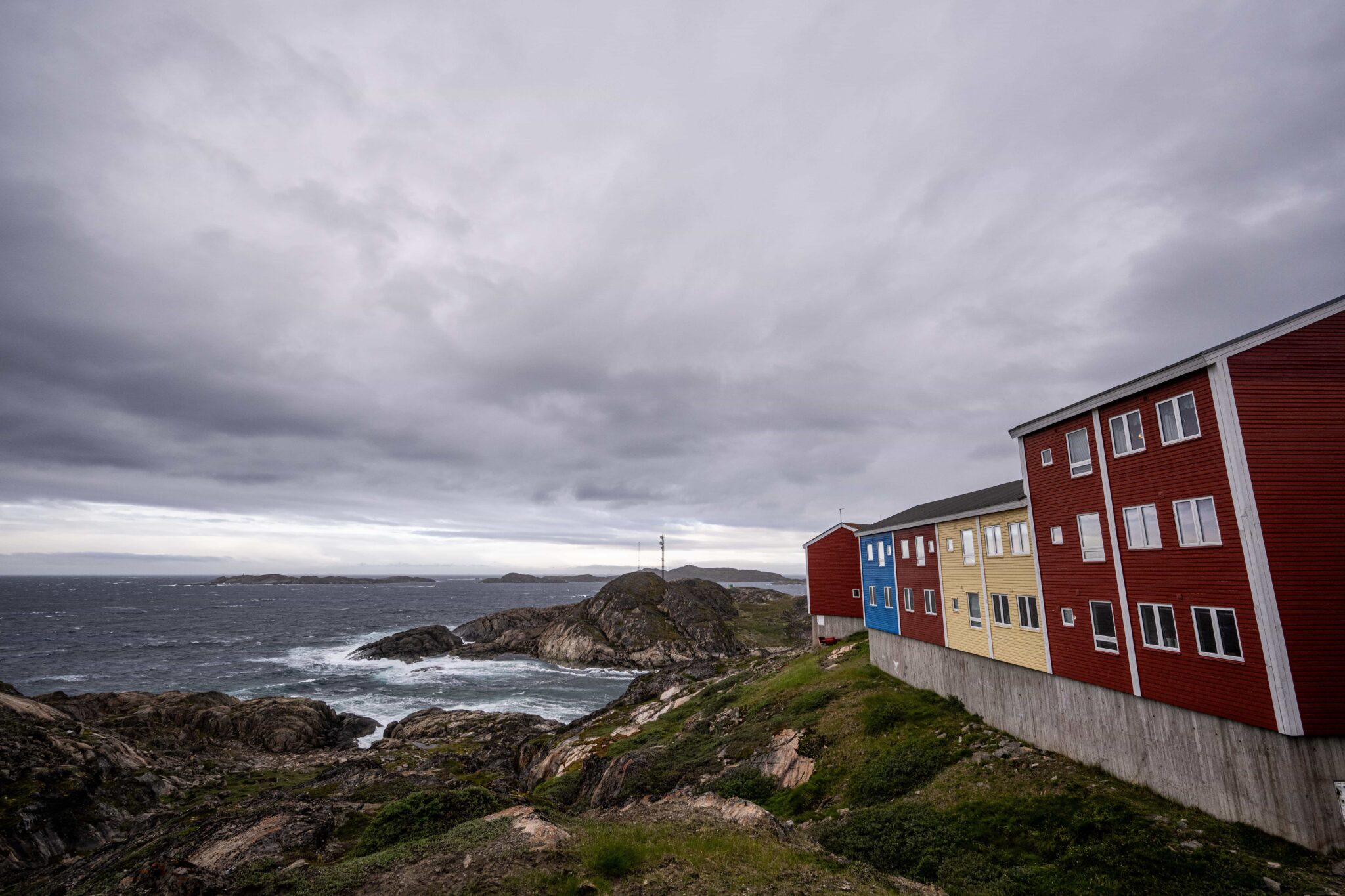
Culture across the Northwest Passage
Can you remember the first time you heard about the Northwest Passage? While your knowledge of this elusive Arctic region may be short, the Northwest Passage’s history spans centuries. It’s marked by exploration, hardships and the quest to discover a navigable Arctic route between the North Atlantic and Pacific Ocean. It’s common to wonder who found the Northwest Passage; though the answer will depend on your vantage point: custodian or explorer? You choose.
The Northwest Passage is one the least populated regions in the world, with 0.13 people per square kilometre (0.05 per square mile). Evidence from the area suggests humans were in this harsh Canadian Arctic region at least 12,000 years ago, if only as hunters passing through. Other archaeological finds indicate established Paleoeskimos settlements some 5,000 years ago.
This high Arctic tundra has been home to the Inuit people for thousands of years. Their settlements span Canada, Alaska, Greenland and Russia. As custodians of this vast and hostile land, the Inuit beat the odds, successfully inhabiting one of the harshest environments in the world.
With a deep connection to the land and ice, the Inuit people have passed their knowledge, resilience and cultural practices down for generations. Today, they continue their traditional hunting, fishing, and gathering practices while standing tall as advocates for the region, on a mission to protect their cultural heritage and promote sustainable practices that respect the delicate balance of the Arctic ecosystem.
Alongside Inuit communities, there are other Indigenous communities along the Northwest Passage. This includes First Nations peoples, including Gwich’in, Dene, Copper Inuit and the Métis, who have ties to First Nations and European settlers. Each has distinct languages, traditions and hunting practices, demonstrating the cultural richness of Arctic Canada.
We’re proud to partner with Oxen’s Community Ambassador Program and look forward to welcoming ambassadors on board select Northwest Passage expeditions in 2024 and 2025.
Through this program, travellers have the opportunity to have meaningful interactions with Inuit, gaining insights into the challenges and resilience of the people who call this remote region home. It also reduces barriers to access for opportunities within the expedition cruise industry for Inuit and increases the economic and social benefits of tourism to Inuit communities.
The intriguing history of the Northwest Passage
It wasn’t until the 15th century that Europeans began investigating the Northwest Passage for trade purposes; it was seen as important for sailors and merchants seeking a northern route to China and the rest of Asia.
Italian explorer John Cabot (sailing under the English flag) was one of the first to embark on a historic voyage to North America. Departing in 1497, Cabot is often credited as the first European explorer of the region since Norse expeditions. Despite his route remaining unknown, Cabot's expeditions laid the groundwork for other polar pursuers. It made him a prominent figure during the Age of Discovery.
It was during the 16th century that the term Northwest Passage came to describe this elusive maritime route. English merchant and explorer, Sir Robert Thorne, used the term in a letter to King Henry VIII in 1527 and it stuck.
Close to 80 years after Cabot’s failed mission, English explorer Martin Frobisher set off to navigate the treacherous Arctic waters. With the promise of accessing lucrative trades and profits, English investors funded Frobisher and his crew. Frobisher fell short, however, believing he had found the passage but instead reaching (what is now known as) Frobisher Bay, off the southeast corner of Baffin Island. All was not lost, however, as Frobisher sparked interest among his explorer peers, triggering a renewed determination to discover and conquer the Northwest Passage first.
Map of the Northwest Passage
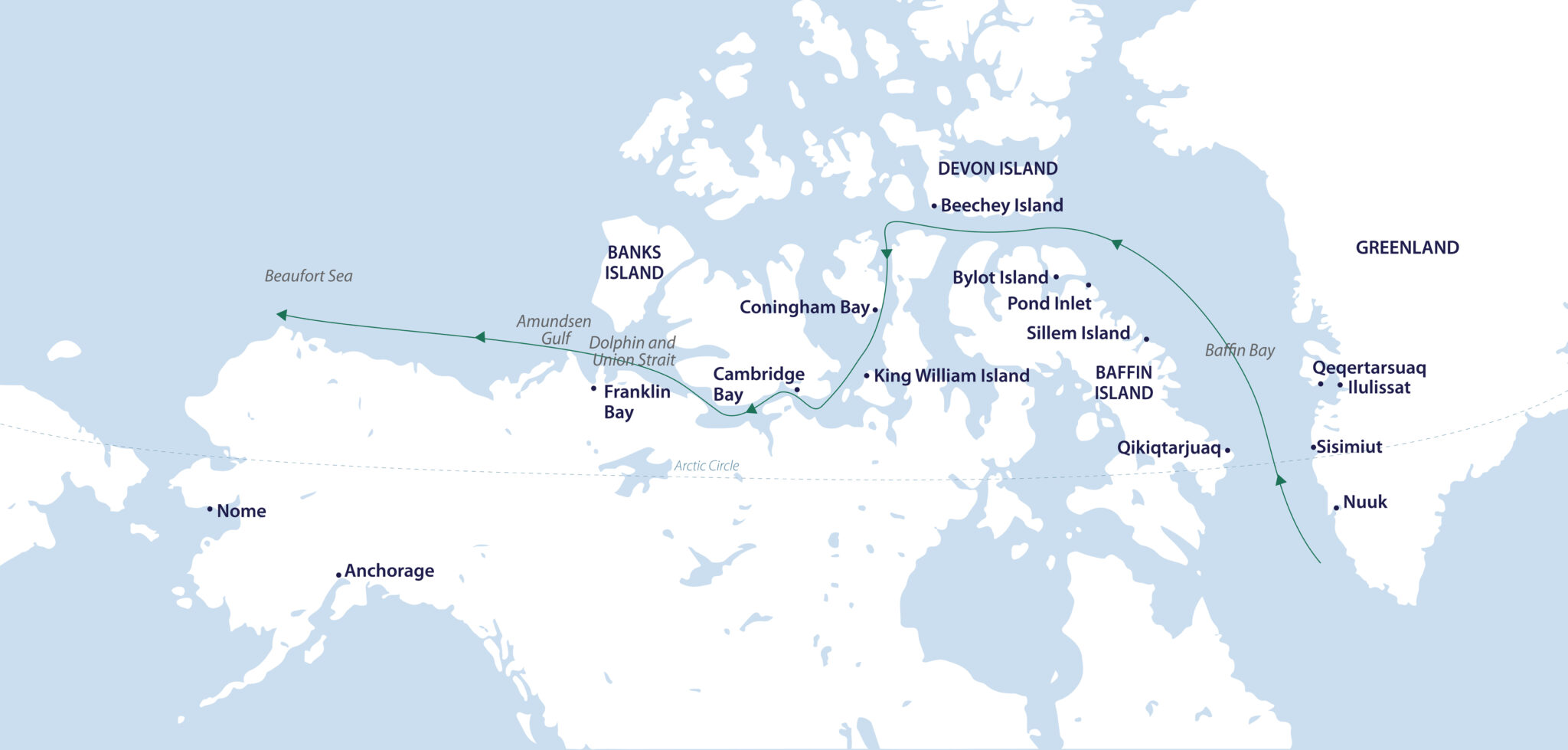
Discovery and mapping the Northwest Passage
The Franklin Expedition is the Northwest Passage’s most well-known tragedy. In 1845, HMS Erebus and HMS Terror, under Sir John Franklin, departed to sail this coveted route. Never seen again, this became a long-standing mystery as no one could locate the two ships or 100+ crew. It was later revealed the ships became frozen in the ice.
To the envy of his peers, famed explorer Roald Amundsen was the first confirmed successful navigator through the Northwest Passage. He travelled from 1903 to 1906 aboard the Gjøa, inspired by insights and skills learned from Norwegian Inuit. No doubt, Amundsen’s Arctic triumph contributed to his success in Antarctica, having been the first to reach the South Pole some five years later. His mapping and notes opened this journey from North America to Asia, saving significant time, money and resources compared to travel via the Panama and Suez Canals.
The next noteworthy period in the Northwest Passage’s history occurred in the mid-20th century when Canada and the United States established the Distant Early Warning (DEW) Line. Designed to detect incoming aircraft and missiles during the Cold War, a line of radar stations and sites were established spanning Alaska to Greenland.
While still a challenging and unpredictable route, thanks to advancements in icebreaker ship capabilities, today’s Northwest Passage offers safe passage to scientists, wildlife experts, historians... and travellers just like you.
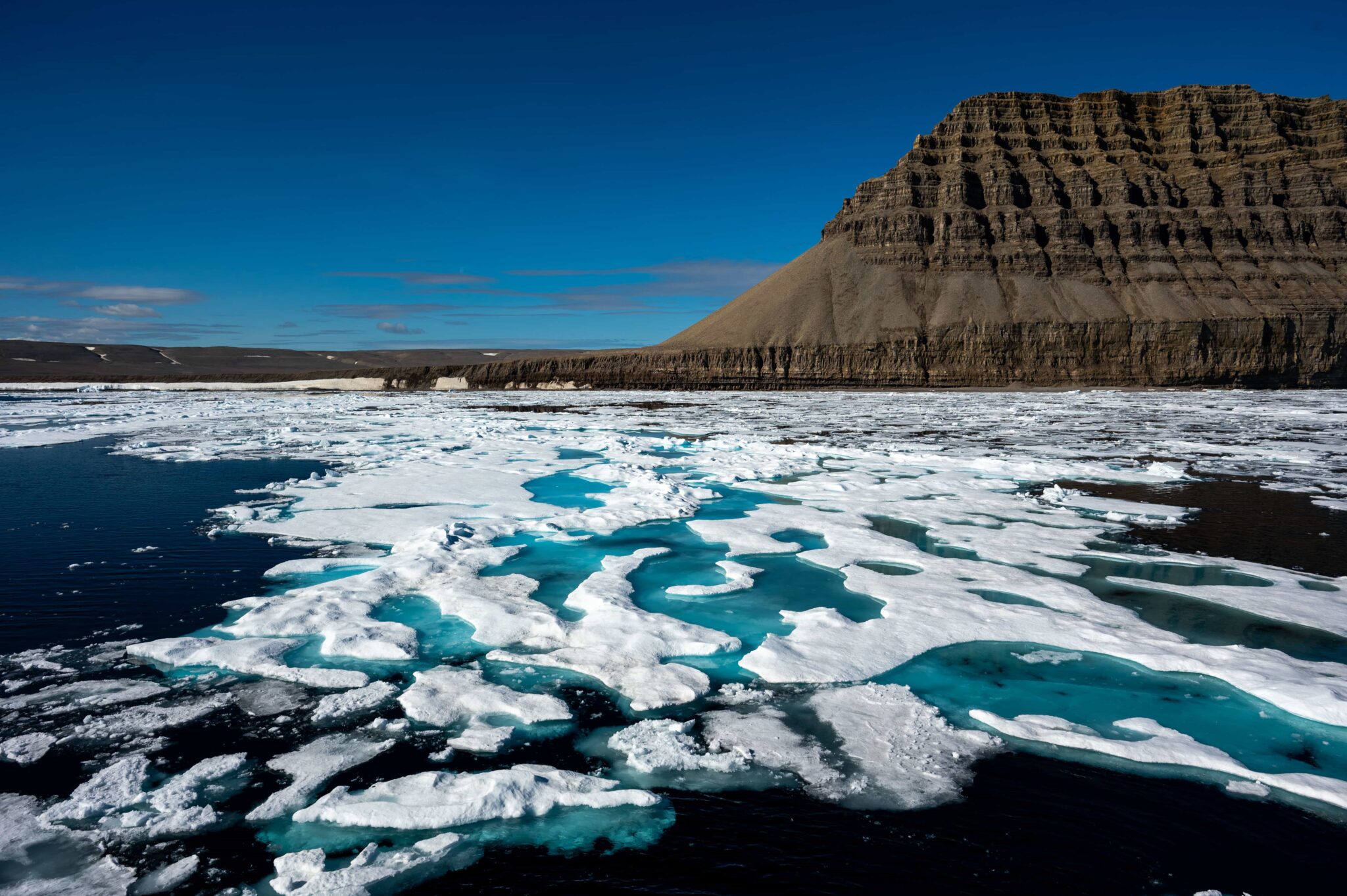
The mysteries of the Northwest Passage
The disappearance of Sir John Franklin and his ships, HMS Erebus and the aptly named HMS Terror, was not the only mystery of the Northwest Passage, though perhaps the most searched for. The loss of lives and the great unknown of what happened to the expedition led to countless rescue and location attempts.
The initial searches took place in 1848 and 1849 when it became clear that trouble had ensued. Lady Franklin often financed these missions, including overland expeditions, naval searches and private investigations, to no luck.
Scottish explorer John Rae had another crack from 1848 to 1854. His tenacity resulted in uncovering Inuit testimony indicating cannibalism had occurred, along with clothing and artefacts that were distinctly European. Taboo in Victorian times, Rae received deep scepticism about these cannibalism claims. This was despite a suspicious account of hunter Michel Teroahauté giving the group ‘wolf meat’ while also claiming explorer Richard Hood had committed suicide. A gunshot wound suggested otherwise.
In the late 19th century, several expeditions took to the Arctic, failing short, and again in the 20th century. In fact, the shipwrecks were only found in the past 10 years, in 2014 and 2016, near Nunavut.
Key revelations from their discovery include confirmation that Franklin’s expedition had indeed traversed the Northwest Passage. From the wreckage, they also determined high levels of lead poisoning, potentially affecting the crew’s decision-making capabilities. There was evidence of their navigational strategies to get off the ice sheet, and confirmation that cannibalism had likely occurred.
Other mysteries here include the archaeological discoveries of ancient Inuit settlements, along with relics from early European explorers. On our Traversing the Northwest Passage and Northwest Passage tours, visit expedition artefacts and remains at Beechey Island and across King William Island. Weather permitting, of course (it is the Arctic).
Despite centuries exploring the Northwest Passage, areas remain unexplored and uncharted. No doubt artefacts lay unclaimed there, too, that will expand our understanding of human experiences across the Arctic. While technology is improving access, the sea ice, harsh conditions and temperamental weather restrict further exploration.
The final mystery is one not even Miss Marple could deduce: what will happen if climate change continues at its current pace? How will the Northwest Passage be affected, what ecological changes will occur, and what might be discovered as the ice retreats? The ice sheet has reportedly shrunk 32% since the 1960s, and in the summer of 2007, it was completely ice-free for the first time in recorded history.
Being responsible citizens at sea is a mission we’re deeply involved in and committed to. Our Sustainability in Action commitment to responsible and respectful travel, 100% climate-neutral sailings and initiatives to minimise our emissions and impact on the environment ensure we’re taking responsibility and action for our planet.
Onboard, we invite all passengers to become Citizen Scientists where you have the chance to make a difference as we provide invaluable data to the scientific community. Our Citizen Science Program is designed to be an interactive forum of like-minded travellers to share new discoveries and deepen their connection to the natural world in a relaxed, informal and fun environment – both on board our ships, on our fascinating shore expeditions and in our Zodiacs.
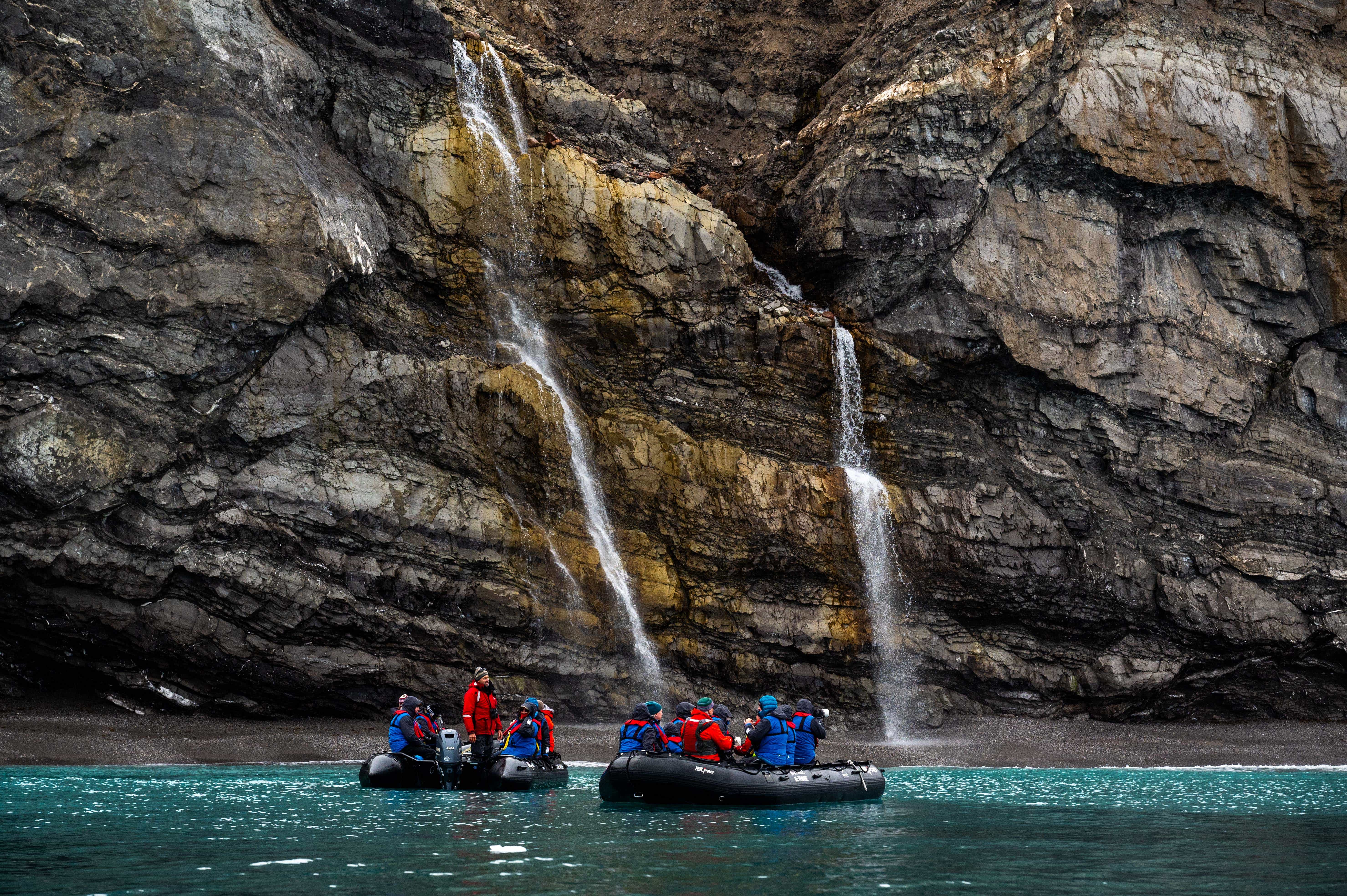
Progress in the Northwest Passage
Modern mapping methods and technological advancements play a role in navigating the Northwest Passage more effectively and safely. They also contribute to deeper exploration into some of the region’s uncharted waters.
Scientists across the region use unmanned Autonomous Underwater Vehicles (AUVs) to explore the seabed and collect data for research and navigation. Deployed environmental sensors also collect data, including sea temperature and salinity. Drones complete the picture, capturing environmental conditions.
For Aurora Expeditions, satellite imagery is invaluable for real-time monitoring of ice conditions, weather patterns and changes across this frigid Arctic environment. This, alongside GPS and ice monitoring technologies, helps us with route planning and navigation. We also rely on modern communication systems, including high-frequency radio and satellite communication to stay connected to support teams, plus complimentary on-board Starlink Wi-Fi.
Our purpose-built icebreaker ships are the unsung stars of our expeditions. Aboard both the Greg Mortimer and the Sylvia Earle, the reinforced hulls, powerful fuel-efficient engines, underwater sonar technology, and dynamic Ulstein X-Bow® design afford us a safer, deeper, more comfortable journey across the Northwest Passage, clearing paths through ice-strewn waters with ease.
The challenges of the Northwest Passage
It should be clear by now that the Northwest Passage is an underexplored region for a reason. An obvious challenge is the harsh Arctic conditions. Extreme frigid temperatures, unpredictable weather patterns and ice-strewn waters make navigation challenging for most ships. Unless it’s a purpose-built icebreaker, like the Greg Mortimer or the Sylvia Earle, of course!
When sailing with Aurora Expeditions, you can enjoy this seemingly unnavigable passage in comfort, passing through thick and thin sea ice, icebergs, ice floes and shallow waters thanks to our ship’s modern technology and design. The lack of infrastructure and supplies presents additional issues.
The biggest challenge facing the Arctic today? Climate change. The accelerating pace of receding Arctic icecaps and the environmental shifts that inevitably follow impact the fragile ecosystem. It is also opening the passage to increased shipping traffic, which in turn can cause concerns for the wildlife, Indigenous communities and the region’s cultural heritage.
In short, the Northwest Passage is an evolving frontier, one we travel through with great respect.
Key facts about the Northwest Passage
Short on time but keen for a summary of the Northwest Passage’s most crucial facts? Here’s our quick-peek guide:
- The Northwest Passage is in Canada’s Arctic Archipelago, north of mainland Canada. It is considered one of the world’s most remote and challenging navigational routes. The passage spans thousands of kilometres over a complex labyrinth of waterways, straits, and channels, some parts of which exceed depths of more than 4,000 metres!
- The landscapes across this complex route of passages include vast Arctic tundra with permafrost, low vegetation, and cold-adapted flora.
- Native wildlife includes polar bears, narwhals, seals, walruses, whales, seabirds, and land mammals, like musk oxen, arctic foxes and hares.
- The Inuit have been custodians of this Arctic region, developing a unity with the land and ice that has allowed them to survive for thousands of years.
- European interest in the Northwest Passage began in the 15th century. The goal was to find a navigable trading route to Asia between the Atlantic and Pacific Oceans.
- The region’s most intriguing expedition occurred in the mid-19th century when Sir John Franklin sailed two ships along the route. It ended in tragedy when both ships and crews disappeared mysteriously. Their shipwrecks were only discovered in the past 10 years.
- Roald Amundsen became the first explorer to successfully navigate the Northwest Passage, sailing from 1903 to 1906.
- Climate change is impacting the Northwest Passage. While the reduction of Arctic sea ice has made the route more accessible, that in turn presents risks to the delicate ecosystem as interest in commercial shipping and resource exploration grows. Geopolitical debates around sovereignty have become hot topics.
- Modern navigation, including advanced satellite technologies, increased icebreaker vessel capacity, and unmanned data collection machinery have improved access to the Northwest Passage.
While there is still so much to uncover across the Northwest Passage, it’s clear that a journey along these complex and largely underexplored waterways has plenty to offer. This is thanks to its rich history, diverse landscape, cultural tapestry and intriguing mysteries.
To explore the hidden secrets of the Northwest Passage and gain firsthand insights into its rich history and captivating mysteries, join us on one of our extraordinary explorations of intrigue and adventure. To book, contact our expert team or request an online quote.
Curious if the Northwest Passage is the best Arctic expedition for you? Check out this handy guide.














